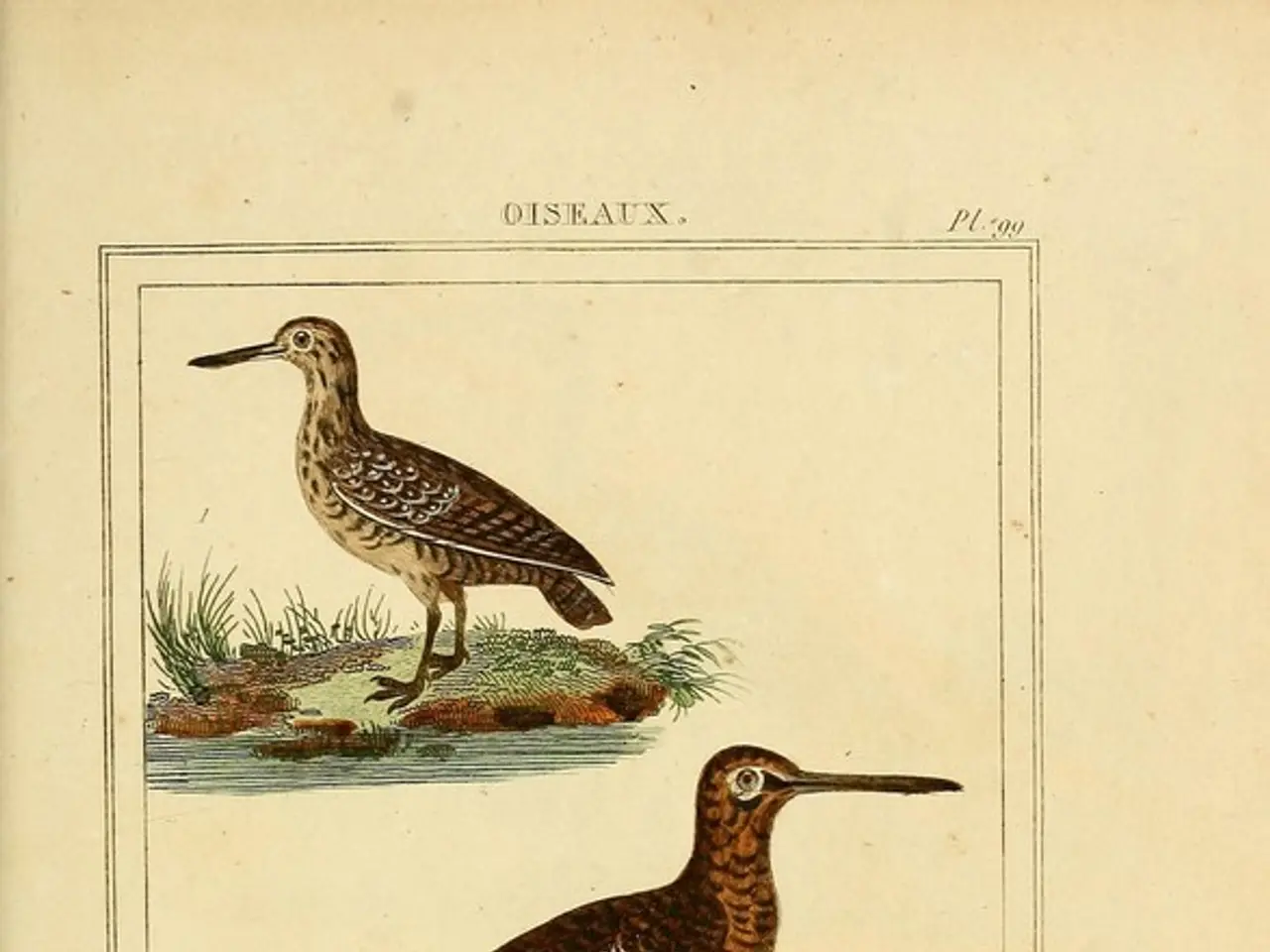Optimizing your backyard bird bath placement for peak bird activity during summer months
A birdbath can be a delightful addition to any garden, offering a refreshing water source for our feathered friends during both heatwaves and winter. Here are some expert tips to help you choose and place the perfect birdbath, ensuring it becomes a popular spot for your local avian community.
Firstly, consider the location. A sunny area is ideal, but avoid intense all-day sun that can overheat the bath, causing water to evaporate quickly and promoting algae growth. A partially sheltered spot, protected from cracking or weather damage, is perfect.
Next, think about proximity to cover. Ensure there is nearby natural cover such as shrubs, trees, or bushes. Birds prefer to have quick access to shelter from predators like cats or hawks, but avoid putting the bath too close to dense low bushes where predators might hide.
Height and accessibility are also important factors. Birdbaths do not need to be very high, but situating them within easy flight distance of cover encourages bird visits. Placing them around 5 feet off the ground often deters ground predators and squirrels, but the exact height can vary depending on the local bird species and landscape.
Avoid shaded areas as mosquitoes breed in stagnant water in shady, damp locations. A sunny spot helps keep water moving and discourages mosquitoes, improving bird safety and bath hygiene.
Safety from predators is another key consideration. Avoid placing birdbaths too close to structures or dense foliage where predators can ambush birds. Providing a clear line of sight around the bath helps birds feel safe.
Maintenance considerations are also crucial. Position the bath where you can easily refill and clean it, since fresh, clean water is critical to attracting and protecting birds.
Avoid common mistakes such as placing the bath in shaded, mosquito-prone areas, too exposed to harsh sun without protection, or too close to predator hiding spots. Choosing a location that aligns with the habitat preferences of local bird species increases the likelihood of use.
When it comes to the birdbath itself, consider opting for birdbaths made from weather-resistant materials, like metal, concrete, or polyresin, for long-lasting durability. Some birdbaths may come with additional features like solar fountains, which can attract birds with movement and sparkle.
Lastly, consider the aesthetic of your garden. Choose a birdbath style that complements your garden's aesthetic, whether it's a sculptural centerpiece, a rustic stone bowl, or a solar fountain. Surround your birdbath with native plants, nectar-rich flowers, berry bushes, and ornamental grasses to enhance its appeal to birds.
Position your birdbath in a low-traffic zone to minimize human and pet activity, and ensure it is level and stable to prevent it from tipping over. Place your birdbath within reach of perches like tree branches or fencing for birds to rest and scan for danger before landing.
By following these expert tips, you can create a beautiful, inviting, and safe birdbath that will attract a variety of birds to your garden.
References: [1] The Spruce - How to Attract Birds to a Birdbath [3] National Wildlife Federation - How to Choose and Place a Birdbath [5] Bird Watching Daily - How to Choose the Best Birdbath for Your Yard
Incorporating a birdbath into your home-and-garden lifestyle can significantly enhance your garden's appeal to avian visitors. When deciding on garden ideas, consider adding a flower bed adorned with nectar-rich flowers near the birdbath to further attract birds and create a harmonious environment. Maintaining the birdbath's cleanliness and placing it in a sunny yet partially sheltered spot will ensure it becomes a popular watering hole for local birds.





